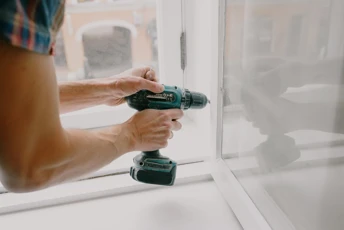 Reviewed by: Mobeen Akram - New Homes Director
Reviewed by: Mobeen Akram - New Homes Director
Labour have won the 2024 general election, and they have pledged to make a host of changes to better the economy. In fact, throughout the campaigning period, their slogan was simply “Change.” While there has been plenty said about the economy at large, what does this look like for your home and mortgage?
An overview of the election
In the 2019 election, the Conservatives won 365 seats out of 650, Labour won 203, the Scottish National Party won 48, and the Liberal Democrats won 11. Reform UK, previously The Brexit Party when formed in 2018, won 0.
In what is being hailed a “landslide victory,” Labour have won the majority and will form a new government. This means Keir Starmer will become prime minister once formally asked to do so by King Charles. Other notable victories include:
-
Nigel Farage wins his seat after seven failed election attempts
-
Jeremy Corbyn, previous Labour leader, hold his seat in north London, now as an independent
-
Rishi Sunak defends his seat and will continue as an MP, not prime minister
-
Former PM Liz Truss loses her seat among other senior Conservatives
-
Green Party co-leader Carla Denyer won Bristol Central, unseating senior Labour MP Thangam Debbonaire
With Labour in power, here’s the housing policies we’ll be sure to look out for over the next five years:
Labour’s pre-election manifesto
Leading up to the election, Labour’s manifesto was promising, and in many ways, sat as the core of their offerings, not the limit of their ambition.
“Delivering on Labour’s five missions,” as Keir Starmer has said, “is a decade long project that will demand focus and commitment across government.” Will they have the time and capacity to deliver on their missions and what could the future look like if they do? Labour’s housing policies are one of a few key areas where there hasn’t been a significant amount of debate or information, so it’s difficult to say exactly what they’re working towards.
Labour’s manifesto didn’t specifically outline or address housing. Rather, their housing policies fell under broader policy areas, such as “driving economic growth” and “breaking down barriers to opportunity.” Because many of Labour’s housing policies were not necessarily definitively outlined, it’s challenging to say exactly what they’re going to do in the coming months and years. That being said, we can outline some of the key promises and the impact they may have on the mortgage and housing market, should they keep their pledges.
What to expect for Labour in the coming weeks
With Labour in power, we can expect three major housing announcements within the next two weeks. That’s the claim from the Sunday Times anyway, who declared themselves for Labour. According to Landlord Today1, here’s what we can expect to be announced within the fortnight:
-
A new draft of the National Planning Policy Framework - which housing targets reinstated
-
A local authority-led review of the Green Belt
-
A thus unspecified new affordable house building programme
Mobeen Akram, New Homes Director at Mortgage Advice Bureau said:
"Labour now has the opportunity to push forward and give the housing sector a much-needed boost. In the first 100 days of government, we hope to see a number of proposals come into play - most notably, kickstarting the promise to build 1.5m new homes over the next decade. We’re also keen to see the rollout of new affordable house building programmes, as well as a review of greenbelt land, both of which would have a positive impact for prospective and current homeowners. This change in government offers a prime opportunity to reinvigorate the housing market. It's now up to Labour to take decisive action and differentiate itself from its predecessors."
Labour’s pre-election promises for housing and mortgages
Labour is entering an objectively challenging economy. For example, owning a home “has got harder” under Conservative leadership, something Rishi Sunak himself has said, but at that time he noted a desire to “make that better.” The fact is, when David Cameron entered Downing Street in 2010, two years after the 2008 house-price crash, the average home in England cost 6.9x a full-time employees salary. In 2023, that was 8.3 times the cost. London particularly is worse off at 12.7 times the average full-time workers salary.
Labour plans to boost house building, and this improves a variety of sectors, from suppliers and the construction industry to conveyancing and real estate. Sir Keir Starmer has said that he wants to “make a start on this from day one.” They will need to overcome a few obstacles to achieve this, such as the fact that there aren’t enough builders in the industry to meet Labour’s demands. How this will play out remains to be seen, but for now, here’s what we know:
1.5 million homes
Labour have promised to build 1.5 million new homes over the course of the next parliament. This is an ambitious target, though it’s still 100,000 lower2 than the figure pledged by the Conservatives and 400,000 less than the Liberal Democrats.
To achieve this, they are going to hit the ground running, with Angela Rayner stating3 that she would announce a housebuilding programme at the start of the second week in power. The following week, she aims to write to local authorities to begin the process of regularly reviewing greenbelt boundaries. This forms part of the goal to meet housing targets. The party also plans to recruit 300 new planning officers to speed up the process and prioritise new homes for local residents.
Muyiwa Oki, president of the Royal Institute of British Architects said, “Labour’s ambitions to deliver high-quality, sustainable homes are encouraging - as are pledges to fund additional planning officers.” He goes on to say that despite the manifesto offering overarching solutions, the plans lack “critical detail on delivering social housing and future proofing existing homes.”
We’d need to see more details from Labour to outline how they plan to meet their housing goals while maintaining a fair policy process that serves all demographics.
Permanent mortgage guarantee scheme
Labour’s homes policy outlines how they will keep mortgage rates low and help first time buyers with a new ‘Freedom to Buy’ scheme - which is essentially the mortgage guarantee scheme, though we may see further additions. This forms part of their plan to support 80,000 young people4 to get on the housing ladder over the next five years. Pivotal to this is their plan to enact a ‘first dibs’ scheme that would allow local people to get into new developments before the properties are sold to international investors.
While Labour have pledged to make the mortgage guarantee scheme permanent, they haven’t, as of yet, spoken about any additional house buying schemes. For example, the Conservatives promised to bring Help to Buy back. Whether this would have been a good thing remains to be seen. While Help to Buy made it possible for 387,195 people to buy their homes5 (328,346 of which were first time buyers), there is evidence to suggest that it inflated house prices6 and made it more challenging for other buyers to get on/move up the property ladder.
Brownfield first and protecting the green belt
A big part of Labour’s delivery plan will include their ‘brownfield first’ policy, which aims to protect England’s green zone belts and protect the countryside from urban sprawl. In their manifesto, they pledged to preserve these areas but they will need to balance this with their pledge to build more homes across the country.
They claim to support a ‘more strategic approach’ to the green belt, which means putting more stringent planning restrictions in place and releasing under-used, lower quality grey belt land. This may include fast-tracking approval of brownfield sites but experts say that brownfield development will not be enough to meet housing needs.
For sustainability tips at home and how to make your home more energy efficient, check out our Green Hub.
Prioritising the building of new social rented homes
Labour plans to deliver the biggest increase in social and affordable housing in a generation, and their aim is to prioritise the building of new, social rented homes.
Labour have not set a target for social housing and have not yet promised to increase funding for the government’s main social housing programme. They do note measures such as protecting existing stock through reviewing Right to Buy discounts and increasing protections on newly-built social housing.
A dire need for social homes may call for more concise action and ambition. This may look like scrapping Right to Buy altogether and funding councils to build both new and purchase existing housing stock. The concern for some is, in 2022-23 there were 24,392 social houses sold.7 Of these, 14,085 were through Right to Buy. From April 1980 to March 2023, 2,020,779 social dwellings have been sold through Right to Buy8 - this includes statutory Right to Buy, voluntary Right to Buy, and preserved Right to Buy. 90% of all recorded social housing sales have been through Right to Buy schemes.
If scrapping Right to Buy comes into play, Labour would need to consider how to plug the gap and address shortgages.
Increased surcharge of stamp duty paid by non-UK residents
Labour plans to increase the stamp duty land tax surcharge paid by non-residents when purchasing a UK property. The current rate is 2%, which Labour plans to increase to 3%. In their fiscal plan8, they would use this revenue to appoint 300 new planning officers to a total cost of £20m. This should help speed up the planning process and get housebuilding moving.
A Labour government and your mortgage
Labour has said they’re a party reconnected to their purpose, and if they bring their plans to fruition then we could see positive movement across the board for the country. They say their goal is to serve the working people and put economic stability at the forefront of everything they do.
What does this mean for your mortgage? At the face of it, nothing will impact your current mortgage yet and economic stability could mean reduced interest rates - or, at the very least, consistent rates. For those looking to buy a house soon, there’s no reason to not go ahead. The mortgage guarantee scheme is still in effect, inflation is the lowest it’s been in months, and the base rate is stable, with drops potentially coming later this year.
If you’re not sure what your next steps should be, get in touch with a mortgage adviser to discuss your options. They can help you review your existing mortgage or give you steps forward to achieve your homeownership dreams.
Important information
Your home may be repossessed if you do not keep up repayments on your mortgage.
There may be a fee for mortgage advice. The actual amount you pay will depend on your circumstances. The fee is up to 1% but a typical fee is 0.3% of the amount borrowed.
Related Articles
Why you should start preparing for 2025 Stamp Duty changes now
Government unveils new nutrient neutrality rules
Retrofitting rental properties for a greener future
Sign up to our monthly newsletter
Stay up-to-date with all the latest mortgage news and homebuying tips with our monthly newsletter. Jam-packed with helpful information and advice, you'll always know what's happening in the industry and how it might affect you.
Whether you're a first time buyer or getting ready to remortgage, we're here for you with helpful tools, articles and information delivered straight to your inbox.




